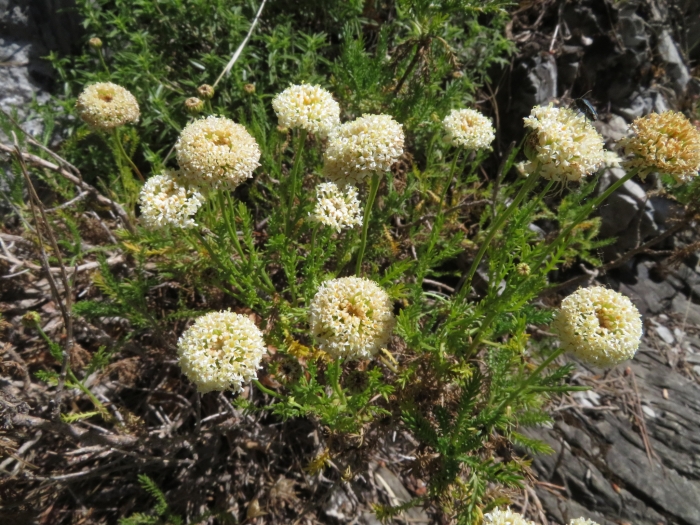Lavender Cotton
(Santolina pinnata)
Lavender Cotton (Santolina pinnata)
/
/

Milan Chytrý
CC BY 4.0
Image By:
Milan Chytrý
Recorded By:
Copyright:
CC BY 4.0
Copyright Notice:
Photo by: Milan Chytrý | License Type: CC BY 4.0 | License URL: http://creativecommons.org/licenses/by/4.0/ | Rights Holder: Milan Chytrý | Publisher: iNaturalist | Date Created: 2022-06-10T10:53:20-07:00 |






















Estimated Native Range
Summary
Santolina pinnata, commonly known as lavender cotton, is a perennial herb native to the Mediterranean region, specifically the western and central parts of the area, including northwest Italy. It is often found in dry, open areas such as coastal scrub, garrigue, and rocky hillsides. Lavender cotton typically grows to a height of 1-2 feet (30-60 cm) and spreads to a similar width, forming a compact, rounded mound. The leaves are narrow, gray-green, and resemble those of rosemary, which is why one of its notable subspecies is called rosemary-leaved lavender cotton. This subspecies has been recognized with the Royal Horticultural Society’s Award of Garden Merit for its horticultural value.
Santolina pinnata is valued for its finely textured, aromatic foliage and its bright yellow, button-like flowers that bloom in the summer. The showy flowers add a splash of color to gardens and are particularly attractive to pollinators. It is commonly used in knot gardens, as a border plant, or in rock gardens due to its drought tolerance and low maintenance requirements. Lavender cotton prefers full sun and well-drained soil, and once established, it has low water needs. It is also used for its essential oils in aromatherapy and perfumery. While generally disease-resistant, it can suffer from root rot if overwatered or planted in poorly drained soils. Pruning after flowering helps maintain its shape and promote denser growth.CC BY-SA 4.0
Santolina pinnata is valued for its finely textured, aromatic foliage and its bright yellow, button-like flowers that bloom in the summer. The showy flowers add a splash of color to gardens and are particularly attractive to pollinators. It is commonly used in knot gardens, as a border plant, or in rock gardens due to its drought tolerance and low maintenance requirements. Lavender cotton prefers full sun and well-drained soil, and once established, it has low water needs. It is also used for its essential oils in aromatherapy and perfumery. While generally disease-resistant, it can suffer from root rot if overwatered or planted in poorly drained soils. Pruning after flowering helps maintain its shape and promote denser growth.CC BY-SA 4.0
Plant Description
- Plant Type: Shrub
- Height: 1-3 feet
- Width: 2-4 feet
- Growth Rate: Slow
- Flower Color: Yellow
- Flowering Season: Summer
- Leaf Retention: Evergreen
Growth Requirements
- Sun: Full Sun
- Water: Low
- Drainage: Fast
Common Uses
Border Plant, Deer Resistant, Drought Tolerant, Fragrant, Groundcover, Low Maintenance, Rabbit Resistant, Rock Garden, Showy Flowers
Natural Habitat
Native to the Mediterranean region, including dry, open areas such as coastal scrub, garrigue, and rocky hillsides
Other Names
Common Names: Holy Flax, Feather Santolina
Scientific Names: , Santolina pinnata, Santolina leucantha, Santolina pinnata subsp. pinnata,
GBIF Accepted Name: